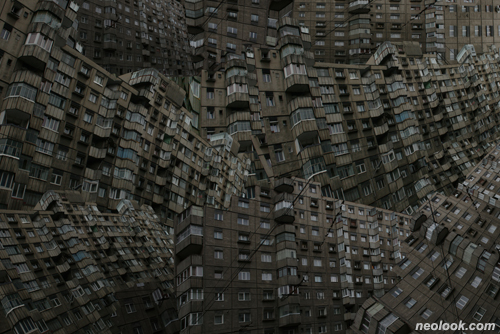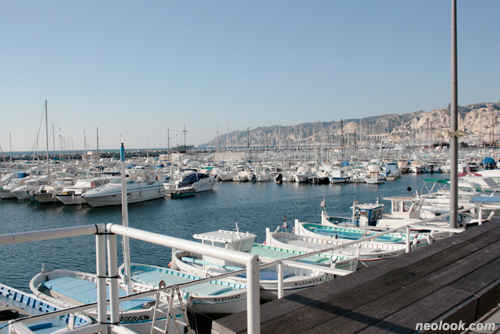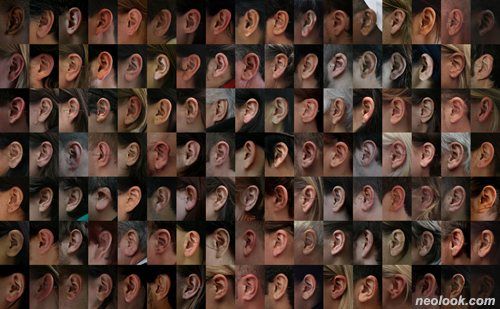- ● homepage
- ● archives
- ● restoration
- ● books
- ● big banners
- ● post board
- ■ neo's search
- ■ about us
- ■ 게재방법 안내
- 개인정보처리방침

- [email protected]
- Tel. 02_335_7922
- Fax. 02_335_7929
- 10:00am~04:30pm
- 월요일~금요일
- 3/3(월) 대체공휴일

On My Way Here_Soundscape
김서량展 / KIMSEORYANG / 金㥠涼 / mixed media 2015_1106 ▶ 2015_1209 / 주말,공휴일 휴관

- 김서량_I Am Here_Communicated in Busan_ 소리 시각 설치, 빔프로젝트, 모형물, 4 채널 사운드_00:11:17_2015
초대일시 / 2015_1106_금요일_06:00pm
사운드 퍼포먼스_김서량, 다니엘 헨리히(Daniel Henrich)
송은 아트큐브는 젊고 유능한 작가들의 전시활동을 지원하기 위해 (재)송은문화재단에서 설립한 비영리 전시공간입니다.
주최 / 재단법인 송은문화재단
관람시간 / 09:00am~06:30pm / 주말,공휴일 휴관
송은 아트큐브 SongEun ArtCube 서울 강남구 영동대로 421(대치동 947-7번지) 삼탄빌딩 1층 Tel. +82.2.3448.0100 www.songeunartspace.org
도시 소리 이야기 ● 인간의 감각 중 가장 중요한 것은 무엇일까? 잠시 고민을 해보겠지만 아마도 대부분은 시각이라 대답할 것이다. 본다는 행위가 그 어떤 행동보다 가장 많은 정보를 취합할 수 있는 것으로 여겨지기에 그렇다. 더군다나 태블릿 PC, 스마트폰 등이 널리 보급된 현시대의 사람들에게 시각 이미지를 제외하고 세계를 상상하는 것은 거의 불가능한 일이니 이러한 답변은 자연스럽다. 시각 매체가 가진 기록과 정보 전달 능력의 탁월함은 확실히 대단한 것 같다. 중요한 순간을 부여잡고 그것을 지속 가능하도록 재현하는 일. 시각이 우등생이 되는 영역이다. 예술문화의 역사에서도 가장 강력한 매체는 역시 시각 예술이었다. 회화와 조각 그리고 건축이 고대, 중세, 근대를 주름잡던 대표 선수였다면 지난 백 년 동안은 사진과 영화가 그 역할을 수행했다고 말해도 과언이 아니다. 포스트모던 시대 이후 장르의 경계가 무너졌다고는 하지만 여전히 예술계를 진두지휘하는 감각은 시각이다. 그런데 과연 시각이 세계를 지각하는 데에 가장 강력한 도구라는 생각에 의문은 없는 것일까. 최근 여기에 가장 강력한 의문을 제기하는 감각이 있으니 그건 바로 청각이다. 시각의 매개이자 구현물이 이미지라면 청각의 그것은 사운드(sound), 즉 소리이다. 공기가 존재하는 지구에서 모든 사물은 각자의 고유 주파수를 가지고 있고 다른 사물과 만날 때(마찰, 부딪힘이 일어날 때) 그것은 예외 없이 소리를 만들어 낸다. 그런데 우리는 주변의 소리 대부분을 소음으로 간주하여 말 그대로 한 귀로 듣고 한 귀로 흘려버리는 경우가 일상다반사다. 그래서 '사물의 고유한 생김새'는 익숙해도 '사물의 고유한 소리'라는 말은 그다지 자연스럽지 못하다.

- 김서량_On My Way Here_Soundlandscape_사진, 도시의 소리_2009~15

- 김서량_A Flow that Never Stops in Erfurt_사진, 사운드_00:02:20_2013
김서량 작가는 바로 이런 부분에 착안하여 세계를 이해하는 방식에 변화를 주고 그 결과 기존 우리가 알던 일상이 아닌 다른 일상을 지각하도록 한다. 일반적으로 우리는 소리를 단순한 정보 전달 매개로 간주하기 때문에 중요치 않다고 판단되는 대부분의 소리를 소음으로 분류해 흘려버린다. 김서량은 이런 일상의 소리를 채집하고 가공해 그 소리에 우리가 집중하도록 만든다. 소리에 주의를 기울이기 시작하면 세상은 확실히 달라 보이기 마련이다. 가끔 영화나 광고에서 "눈을 감고 주위의 소리를 들어 보세요"라는 문구가 나오곤 하는데 바로 이 순간 세계는 나에게 다른 모습으로 다가온다. 그녀는 특히 사물들이 만들어내는 우연한 소리에 관심을 가진다. 그 이유는 소리에 대한 고정관념을 깨트리기 위해서인데 이를테면 전형적인 새소리나 물소리에 익숙한 우리에게 평소 듣지 못한 새소리와 물소리를 듣게 함으로써 사물의 고유한 소리에 대한 인식을 변화시킨다. 도시에서의 소리는 더욱 그러하다. 수많은 사람과 자동차, 지하철 등이 뿜어내는 소리는 전형적인 소음으로 여겨진다. 즉 도시의 소리는 소음으로 관념화되어 있는 것이다. 그녀는 이런 도시 소음을 들을만한, 아니 듣다 보면 흥미로운 소리로 가공해 우리에게 들려줌으로써 도시 소리를 새롭게 인식하도록 바꿔준다.

- 김서량_Cross in Cluj Napoca & Budapest_사진, 사운드_00:06:37_2015

- 김서량_Coincidence in Giessen_사진, 사운드_00:07:46_2012
자연에 가까운 소리는 듣고 싶은 소리지만 도시나 공업단지에서 파생되는 소리는 우리에게 차단의 대상이다. 산업화, 공업화에 의해 기계의 파열음이 도시를 장악했으니 이는 어쩌면 당연한 일이다. 만약 도시의 소음을 들을만한 소리, 심지어 도시의 일상을 느끼는 소리로 이해하게 된다면 인식의 청각적 변화를 꾀하는 예술적 효과 외에 도시공학적 측면에서 도시경관을 다르게 보도록 하는 효과도 상당할 것이다. 도시의 소음을 1데시벨(dB) 낮추는 데 수 백 억 원의 예산이 소요되지만, 소음에 대한 생각의 변화만으로 5데시벨 수준의 소리를 줄이는 효과가 있다고 하니 감각의 인지 변화가 주는 효과는 실로 엄청나다. ● 모든 감각이 그렇겠지만 김서량 작가가 청각에 특별한 관심을 기울이는 건 과거의 경험과 무관하지 않다. 그녀는 어린 시절 물에 빠지는 경험을 했고 그 때 물이 귀에 들어오면서 낯선 고립감과 두려움을 느꼈다고 한다. 물이 귀에 들어오는 소리. 그리곤 곧 흐르는 적막감. 그 적막감 속에서 들려오는 외부의 작은 소리들. 이런 경험은 그녀를 소리에 집중하도록 만들었다. 그래서일까. 그녀의 초기 소리 작업은 폐쇄된 공간에서의 소리 체험에 집중하고 있다. 자신의 물건들로 꾸며진 방에서 그 물건들과 연관된 소리를 채집 가공해서 전시하거나 공간에 문을 설치하고 닫힌 문과 열린 문의 경계를 실험하기도 했다. 심지어 한사람이 겨우 들어갈 공간을 만들어 그 안에 들어가 폐쇄 공간을 체험하면서 직접 녹음과 녹화를 하는 퍼포먼스를 진행하기도 했다. (사실 그녀는 과거의 폐쇄공포증이 있는데 이를 극복하기 위한 방편으로 작은 박스로 들어간 것이다.) 흥미로운 건 시간이 지날수록 이런 닫힌(내부) 공간의 소리 실험에서 열린(외부) 공간의 소리 실험으로 작업 방향이 이동하고 있다는 점이다. 이번 전시에 출품된 작품들의 소리는 모두 도시 거리에서 수집된 것으로 외부로의 확장이 본격화되었다고 보아도 무방하다. 코펜하겐, 말뫼, 함부르크, 부다페스트, 에어푸르트, 기센, 마르세이유 등에서 수집한 소리들이 각 나라의 사진 또는 영상과 함께 전시된다. 도시가 가지는 각각의 특색에 따라 다르게 수집된 소리들은 해당 도시의 사회, 역사, 지리적인 특징들을 두루 이해할 수 있는 소스들로 가득하다. 물론 이를 듣고 찾아내는 건 대단히 어려운 일이지만 이러한 소스가 사운드에 녹아 들어가 있다는 것은 김서량의 작업 세계를 이해할 때 중요한 포인트가 된다. 왜냐하면 그녀가 수집하는 소리 영역의 확장은 작가로서 세계와 대면하는 외연이 넓어졌다는 것을 의미하며 이는 '나'라는 주체의 동일성 속에서 유희하지 않고 외부와의 만남을 적극적으로 시도하고 있다고 볼 수 있기 때문이다. 이런 확장성은 「May I Photograph Your Ears?」(2009-2014) 작업을 통해서도 확인할 수 있다. 독일에서 수 년 간 우연히 만나는 사람들의 귀를 촬영해 이를 사진형태로 전시한 이 작품은 '나'라는 개인의 귀에 집중하는 태도에서 세상을 같이 살아가는 여러 사람들의 귀로 관심의 영역을 확장했다.

- 김서량_Towards Marseille_사진, 사운드_00:08:30_2015
도시와 사람에 대한 관심의 확장은 부산 홍티아트센터 레지던시 프로그램에 참여하면서 제작한 「I Am Here_Communicated in Busan」(2015)에서도 드러난다. 부산 다대포 '무지개 공단'을 위에서 바라 본 풍경을 벽면에 설치하고 여기에 도시 또는 공업단지의 상징인 격자무늬를 영상으로 투사한 작업이다. 여기에 무지개 공단에서 6개월간 수집한 공장 기계 소리, 차 소리, 사람 소리 등이 공간을 채워준다. 김서량은 홍티아트센터에 머무르면서 공단의 노동자들과 자신이 공유할 수 있는 요소를 찾기 위해 꽤 많은 고민을 했다고 한다. 그 결과 그녀는 공장에서 발생하는 소음이 노동자들의 노동 결과물이라는 것에 착안하여 공단 전체의 소음을 작품의 소재로 삼기로 했다. 현장에서 일하는 노동자분들의 동의를 얻은 것은 아니지만 그녀가 채집해서 만든 소리 작품은 자연스레 무지개공단 노동자들과의 공동작품이 되어버렸다. ● 롤랑 바르트는 사진의 주요한 특징으로 현장의 순간성을 언급한 바 있는데 이는 피사체가 그 때 그 자리에 있었다는 것을 사진이 증명하고 있음을 뜻한다. 달리 말해 연속적인 시간성이 배제된 일시적인 멈춤의 순간성이 사진의 핵심이라는 것이다. 이와 달리 김서량의 사운드 아트는 사건이 발생하고 있는 시간을 담고 있어 어떤 일이 그곳에서 발생했다는 보다 동적인 메시지를 전달하게 된다. 차 소리는 차가 달리고 있다는 사건을 뜻하며, 기계 소리는 기계가 작동하고 있다는 사건을 뜻한다. 사람의 목소리는 사람이 어떤 말을 하고 있다는 행위를 가리키고 물소리는 물이 위에서 아래로 흐르거나 떨어지고 있다는 현상을 의미한다. 결국 소리는 어떤 것의 재현(representation)이 아니라 어떤 사건의 흔적(trace)이거나 직접적인 지표(index)의 역할을 수행한다. 존재를 기록하는 것이 아닌 사건의 흔적을 촉각적으로 남기는 것. 소리의 힘이자 김서량의 사운드 아트의 핵심이다. ■ 김재환

- 김서량_May I Photograph Your Ears ?_사진_각 21×14cm_2009~14
Stories of City Soundcapes ● When asked, "What do you presume is the most important of human senses?" After a brief pause most will conclude sight as the foremost of senses, being undoubtedly considered as the best way to absorb information than any other means. The answer does not come as a surprise considering this day and age of modern technology is flooded with gadgets like tablet PCs and smartphones. It is near impossible to picture a world without the ability to see. The superiority of information recording and transfer abilities of sight is absolutely astounding. What better ability is there than sight in the realm of grabbing and suspending valuable moments in time, allowing them to last forever. If architecture, painting, and sculpture are the visual representatives of the ancient, medieval, and modern periods, it's suffice to say film and photography have taken their place in the last 100 years. ● Even though they say there has been a blurring of genres following the post-modern period, sight is still the human sense that dominates and controls the artistic world. But are we absolutely certain that sight is the best tool for understanding the visual world? Recently, an alternative choice has presented itself as the possible answer to this question - the sense of hearing. If image is the medium and material representation of sight, then hearing has sound. All things on this air-filled Earth have their own unique frequency and thereby without exception create a sound when met with another object (when friction or collision occurs). But the clamor that surrounds us is mostly dismissed and literally goes in one ear and out the other, which is perhaps why the phrase "unique sound of an object" may seem rather foreign compared to the usually familiar "unique look of an object." ● Kim, Seoryang hones in on precisely this point to shake up the way people understand the world. She allows us to shift from the familiar regularities of our lives and begin perceiving an entirely new environment. Because we generally regard sound as a simple information transferring carrier, we tend to largely categorize seemingly trivial sounds as clamor and discard them. Kim, Seoryang picks up and collects these unwanted, common sounds to process them into ones that demand our attention. The world becomes a different place when you begin paying attention to sound. Once in a while a movie or a commercial suggests "Close your eyes and listen to your environment," and when you do, an entirely new world comes knocking on your door. ● Kim, Seoryang is especially interested in the sounds objects made by chance, because it is an excellent way to strip people of the stereotypical ideas they have of sounds, such as the typical chirping of the birds or the gushing of running water. By presenting to us bird or water sounds that are entirely unfamiliar, she changes the way we perceive a unique sound of an object. City sounds are even more familiar to us. The hustle and bustle generated by throngs of people, cars, and subways are sounds typically pushed aside as inconsequential audio. We have intellectualized city sounds as pollution. The artist takes such city sounds, tweaks them, and returns them back to us transformed into something that is actually interesting, thereby allowing us to absorb them in a new way. ● Unlike the soothing sounds of nature that we often turn to, we shun and try to avoid the clamor of cities or industrial areas which does not come as a surprise considering the clangor given off by machines and industrialization completely saturates our cities. If we are able to regard the din of cities not as pollution but as acceptable or even as comfortable and familiar sounds, this will not only be an artistic effect that brings transformation in auditory perception, but may revamp the way we view the city soundscape from an urban engineering standpoint. It takes millions of dollars to bring the city noise pollution down a single decibel (dB), but it is said that change in perception can bring about the effects of reducing 5 dB, showing the immense influence changing a sensory perception can have on us. ● This may apply to all the senses, but there is a reason why the artist takes a particular interest in the sense of hearing. As a child Seoryang fell into the water and felt an unfamiliar sense of isolation and fear when the water rushed into her ears. The sound of water gushing in and the silence that followed along with faint but audible sounds above water outside made her into a child that began to concentrate on sounds. Perhaps because of this experience, Kim, Seoryang's earlier works are centered on experiencing sound within enclosed spaces. Her works included a room decorated with her own belongings exhibited with the collected and processed sounds relating to these objects, or a space with a door installed to test the auditory boundaries of a closed and open door. One particular piece involved creating an extremely tight space barely large enough for one person where she personally enclosed herself inside to do an audio and video recording performance. (This apparently was Kim, Seoryang's attempt to overcome her claustrophobia.) ● What's interesting is that with time Kim, Seoryang has begun to move away from enclosed spaces and is shifting towards sound experiments in open, outdoor spaces. Seeing that all her audio works presented at this exhibition were all grabbed in city streets, she has moved her work stage largely outside. Sounds collected in Copenhagen, Malmö, Hamburg, Budapest, Erfurt, Giessen, and Marseille are exhibited alongside photographs or videos of the respective European city. Sounds were collected in various way to suite the characteristics of each city and contain supplemental information about the city's social, historical, and geographical characteristics. Of course, it is extremely difficult to discern such information from just listening, but knowing the information is embedded within the sounds is a crucial point in understanding the artistic realm of Kim, Seoryang. By widening her sound collecting area she is no longer limiting herself to the usual repetitive subject of the "self" but is proactively branching outward and broadening her horizons where she as an artist meets the world. This shift is evident in her May I Photograph Your Ears? (2009-2014) piece where she captured the ears of numerous people she met by chance over the period of several years in Germany and presented them as a photographic exhibit. The work shows how she moves away from her attitude of focusing on the ears of the "self" and extends her interest to include the ears of others in the world. ● Kim, Seoryang's broaden of interest for cities and people was also shown in I Am Hear_Communicated in Busan (2015) a work created during her residency at the Hong-Ti Art Center in Busan. She installed an aerial view of the "Mujigae Gongdan (Rainbow Industrial Complex) of Dadaepo, Busan, superimposed a video feed of a grid pattern – the symbolic design of a city or an industrial complex – and filled the space with sounds of the factory machines, cars, and people of the industrical complex collected over a period of six months. While at the Hong-Ti Art Center, the artist gave much thought to finding common elements between the industrial laborers and herself. She eventually came to the conclusion that the noise was in fact the fruit of their labor and decided to make that the subject of her work. The work she created with the sounds of the complex may not have had their official involvement, but it inevitably became a collaboration work between Kim, Seoryang and the workers of the Mujigae Gongdan. ● Roland Barthes, a French literary theorist and philosopher, once noted that the ephemerality of the moment is the main characteristic of a photograph because it proves the subject was indeed present at the captured moment. In other words, the still, momentary ephemerality, but excluding continuous temporality, is core. Contrary to this, Kim, Seoryang's sound art includes the actual time during when events occur. It conveys a much more dynamic message than simply recording an event that happended at a location: Sounds of a car suggest there is a car being driven somewhere; machinery sounds mean there is a machine in operation; a human voice tells you there is someone in the process of saying something; and sounds of water implies water is either flowing or dropping from higher ground to low. Sound is not a representation but rather acts as a trace or an index of a subject, audibly imprinting an event rather than simply recording its existence. This is the strength of sound, and the core of Kim, Seoryang's sound art. ■ Kim, Jae-Hwan
Vol.20151106h | 김서량展 / KIMSEORYANG / 金㥠涼 / mixed media
